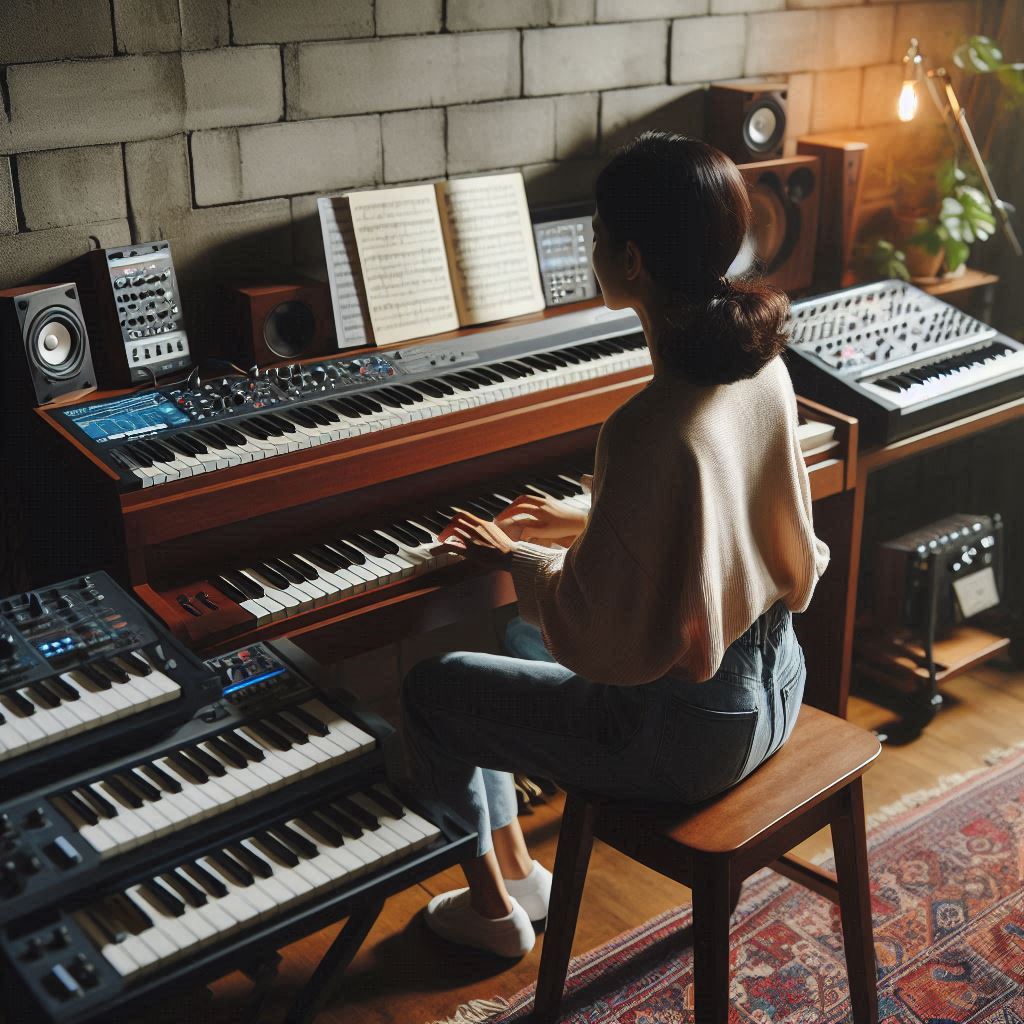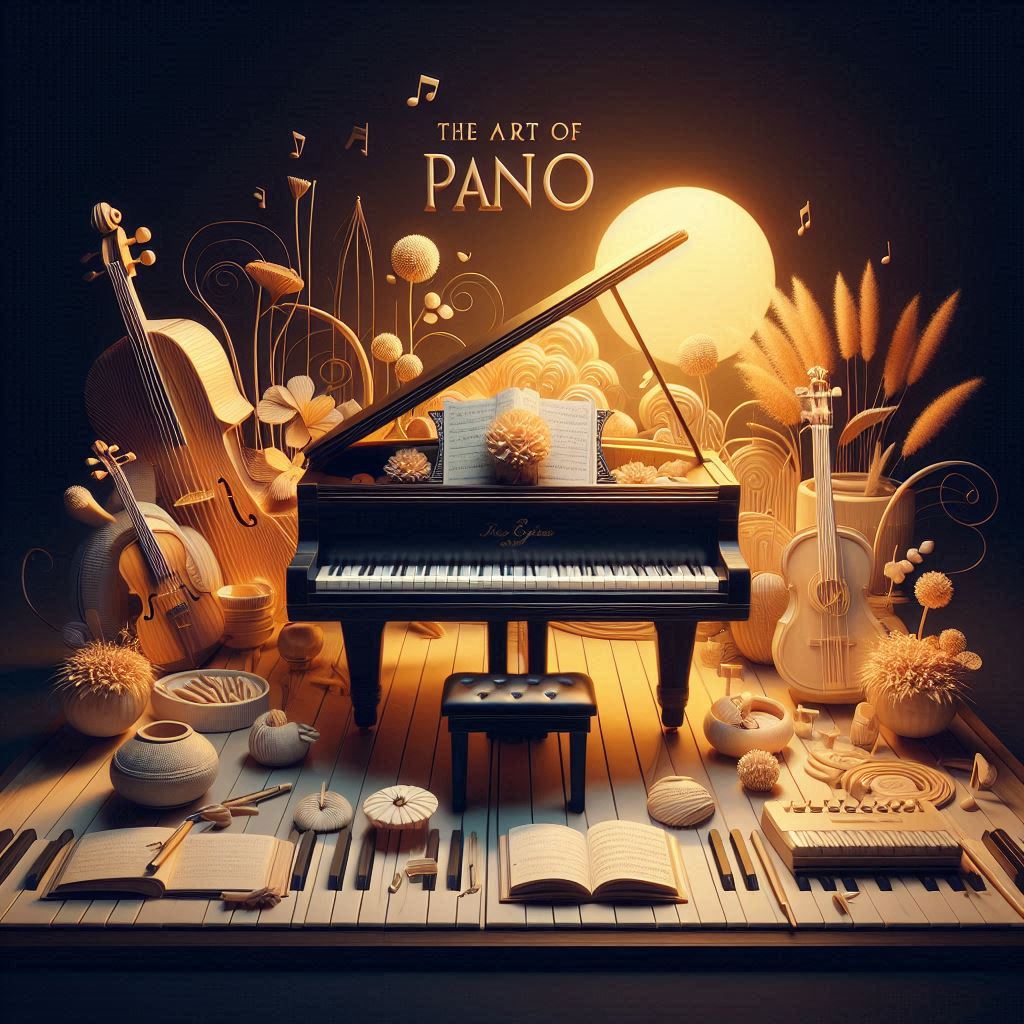Introduction
Transitioning from an acoustic piano to a digital piano can seem like a significant change, but it brings many benefits, including portability, versatility, and advanced features. This guide will help you understand the differences between acoustic and digital pianos and provide practical tips for making a smooth transition.
Thank you for reading this post, don't forget to subscribe!How to Transition from Acoustic to Digital Piano
Understanding the Differences
Sound Production
Acoustic pianos produce sound through the physical action of hammers striking strings, resulting in a rich, organic tone. Digital pianos, on the other hand, use sampled sounds and speakers to emulate this experience.
Touch and Feel
Acoustic pianos have a unique touch due to their mechanical action, which offers a certain resistance and feedback. High-quality digital pianos replicate this with weighted keys and hammer action mechanisms, but the feel can still be slightly different.
Maintenance
Acoustic pianos require regular tuning and maintenance, while digital pianos are virtually maintenance-free, needing no tuning and being less susceptible to environmental changes.
Portability and Space
Digital pianos are more portable and take up less space than acoustic pianos. They are ideal for smaller living spaces and for musicians who need to move their instrument frequently.
Benefits of Digital Pianos
Versatility and Features
Digital pianos come with a variety of features such as different instrument sounds, recording capabilities, and built-in metronomes. These features can enhance practice and creativity.
Silent Practice
Many digital pianos have headphone jacks, allowing for silent practice, which is perfect for those living in shared spaces or practicing at odd hours.
Connectivity
Digital pianos often include USB or MIDI connectivity, enabling integration with computers and music software. This can be beneficial for composing, recording, and using educational apps.
Choosing the Right Digital Piano
Weighted Keys
Choose a digital piano with weighted keys to simulate the feel of an acoustic piano. Look for models with graded hammer action for the most realistic experience.
Sound Quality
Opt for a digital piano with high-quality sound samples. Check reviews and try out different models to find one with a sound that you find satisfying.
Polyphony
Higher polyphony counts allow for more notes to be played simultaneously without note drop-off. Aim for a digital piano with at least 64-note polyphony, though 128-note is preferable for more complex pieces.
Adjusting Your Technique
Hand Position and Touch
You may need to adjust your hand position and touch slightly when transitioning to a digital piano. Practice scales and exercises to get accustomed to the feel of the keys.
Pedaling
Digital pianos often have different pedaling responses. Experiment with the pedal to understand how it affects the sound and to develop a smooth pedaling technique.
Dynamic Control
Work on your dynamic control to ensure you can achieve a wide range of volumes on the digital piano. This can take some adjustment, as the touch sensitivity may differ from your acoustic piano.
Making the Most of Digital Features
Recording and Playback
Utilize the recording features of your digital piano to track your progress and identify areas for improvement. Listening to playback can provide valuable insights into your playing.
Learning Modes and Apps
Take advantage of built-in learning modes and educational apps. These tools can make practice more engaging and help you develop new skills.
Experiment with Sounds
Explore the various sounds and voices available on your digital piano. Experimenting with different tones can inspire creativity and add variety to your practice sessions.
Maintaining Good Practice Habits
Consistent Practice
Maintain a consistent practice schedule. Even though the instrument has changed, the fundamentals of regular, focused practice remain the same.
Goal Setting
Set specific goals for your practice sessions. Whether it’s mastering a new piece or improving a particular technique, having clear objectives will keep you motivated.
Patience and Persistence
Be patient with yourself as you adjust to the digital piano. It may take some time to fully adapt, but with persistence, you will become comfortable and proficient.
FAQs
How do I choose a digital piano that feels like an acoustic piano? Look for digital pianos with weighted keys and graded hammer action. These features replicate the feel of an acoustic piano, providing a more realistic playing experience.
Can I use my existing piano techniques on a digital piano? Yes, you can use your existing techniques, but you may need to make minor adjustments to your hand position and touch. Practice regularly to adapt to the new instrument.
Are digital pianos suitable for advanced pianists? Yes, high-quality digital pianos are suitable for advanced pianists. They offer excellent sound and touch, along with additional features that can enhance practice and performance.
Do digital pianos need tuning? No, digital pianos do not require tuning. This is one of the significant advantages over acoustic pianos, as they remain in tune regardless of environmental changes.
How can I make my digital piano sound more like an acoustic piano? Choose a digital piano with high-quality sound samples and use external speakers or high-quality headphones. Experiment with different settings and reverb effects to enhance the sound.
Can I connect a digital piano to my computer? Yes, many digital pianos have USB or MIDI connectivity, allowing you to connect to a computer for recording, composing, and using educational software.
Conclusion
Transitioning from an acoustic to a digital piano involves understanding the differences, choosing the right instrument, and making necessary adjustments to your technique. Embrace the benefits of digital pianos, such as their versatility, features, and convenience, to enhance your practice and performance. With patience and persistence, you will find that playing a digital piano can be as rewarding and enjoyable as playing an acoustic one.



